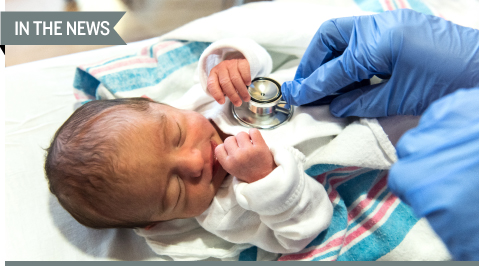
Juanmonino / E+ / Getty Images
An experimental lentiviral gene therapy approach that restores immune function offers hope to infants with X-linked severe combined immunodeficiency (X-SCID), a rare disorder caused by mutations in the IL2RG gene. Investigators from the National Institutes of Health’s National Institute of Allergy and Infectious Diseases (NIAID) and St. Jude Children’s Research Hospital in Memphis reported their findings in The New England Journal of Medicine (NEJM).
According to one of the study’s co-authors, labs play a crucial role in the execution of this technology. Its success “is highly dependent upon the complex handling of patient marrow and blood stem cells from the time of procurement, through the complex purification of stem cells, culturing in the lab, cryopreservation, and the laboratory testing for sterility and other key safety testing,” Harry Malech, MD, chief of NIAID’s genetic immunotherapy section in the Laboratory of Clinical Immunology and Microbiology, told CLN Stat. “All of this is dependent upon highly trained and dedicated laboratory personnel.”
X-SCID often kills infants before their first or second birthday unless a stem cell transplant from a matching sibling donor is available. Less than 20% of these patients find matching donors, and those who receive a bone marrow transplant from a parent or other donor only partially retain their immunity in most cases. Stem cell transplantation for X-SCID “often fails to reconstitute immunity associated with T cells, B cells, and natural killer (NK) cells when matched sibling donors are unavailable unless high-dose chemotherapy is given,” the study’s authors reported.
The clinical trial took place at St. Jude and the Benioff Children’s Hospital of the University of California, San Francisco, enrolling eight X-SCID infants aged 2 to 4 months with no donor options. Investigators used an engineered lentiviral vector to transfer a normal copy of the IL2RG gene into the infants’ blood-forming stem cells. According to a statement from NIH, the investigators were able to do so without activating other cancer-causing genes. The young patients received a low dose of chemotherapy medication busulfan, which enabled the genetically corrected stem cells to manifest in the bone marrow and produce new blood cells.
“The corrected stem cells are thawed and injected by vein into the baby. After these blood stem cells engraft in the baby’s marrow, it can take up to a few months for full restoration of immune function to occur as the corrected stem cells give rise to new blood immune cells,” Malech explained.
After more than 16 months, investigators found that seven of the patients had developed normal levels of T cells, B cells, and NK cells, 3 to 4 months after gene therapy infusion. The eighth infant received an additional infusion of gene-corrected cells without busulfan conditioning to correct insufficient T cell counts. Seven of the eight infants also experienced normalization of IgM levels. Among these seven, four were able to discontinue intravenous immune globulin supplementation and three of these four developed antibody responses to childhood vaccinations.
“Previous infections cleared in all infants, and all continued to grow normally,” the investigators reported. None of the treatments, which included bone marrow harvest, busulfan conditioning, and cell infusion, resulted in unexpected side effects, although some of the infants experienced low platelet counts after chemotherapy.
“These exciting new results suggest that gene therapy may be an effective treatment option for infants with this extremely serious condition, particularly those who lack an optimal donor for stem cell transplant. This advance offers them the hope of developing a wholly functional immune system and the chance to live a full, healthy life,” said NIAID Director Anthony S. Fauci, MD in a statement.
The success of this type of therapy is spurring development of lentivector gene therapy treatments for many other blood and immune cells disorders, Malech said. “We and others continue to seek ways to improve upon our current tools though improved methods of gene transfer.”